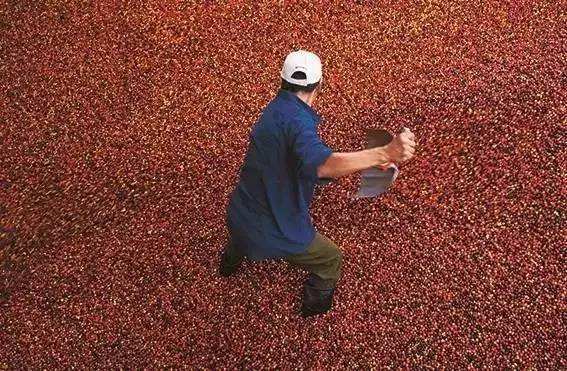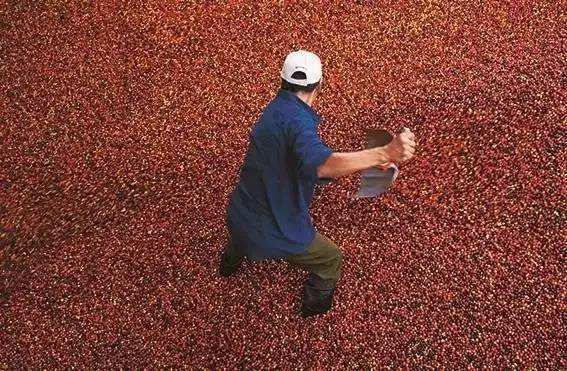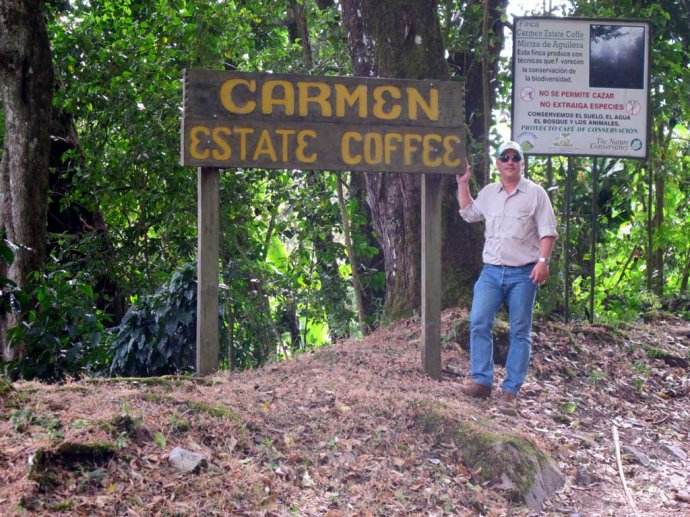Guatemala San Pero Estate Artelan Camu White Honey Treated Cadura Retains 20% Pectin Fermentation
Coffee was really introduced into Guatemala in 1750 by Father Jesuit, where the coffee industry was developed by German colonists at the end of the 19th century. Today, most of the coffee industry's production takes place in the south of the country. Guatemala has seven main coffee producing areas: Antigua (Antigua), Cobain (Coban), Lake Attilan (Atitlan), Vevetnango (Huehuetenango), Farahan Plateau (Fraijanes), Oriente (Oliente) and San Marco (San Mareos).
Each region has its own climate change, so the coffee beans in each region have their own characteristics, but to sum up, Guatemalan coffee has a mild and mellow overall texture and elegant aroma. With similar hot and pleasant acidity such as fruit acid, Guatemala has become an aristocrat in coffee.
Volcanic soil, high altitude, humid and rainy climate, and active volcanic activity have created the unique geographical conditions of the Farahan Plateau. The Pacaya volcano in the region is the most active of the three still erupting volcanoes in Guatemala, leaving the Farahan Plateau often shrouded in a thin layer of dust and providing plenty of minerals for the soil of the Farahan Plateau.
The dry period of coffee beans is the sunny season on the Farahan Plateau. Although it is often cloudy and foggy in the early morning, it will dissipate quickly, ensuring sun conditions in the area.
Guatemala white honey Camus, retain 20% pectin fermented honey treatment
White honey treatment is a rare coffee treatment method, and its specific operation methods are as follows:
1: remove 90% and 100% pectin from coffee after picking.
(consistency, high cleanliness, balanced taste)
2: the drying time is about 2 weeks.
(coffee is relatively low in sweetness.)
3: the drying method is dried by sunlight or natural shade.
(sun-irradiated coffee beans have relatively high sweetness and natural shade-dried coffee beans have relatively high acidity.)
During the harvest season, many raw bean batches from Attilan San Pero will be cup tested based on quality and bean information. The most representative batches are selected and mixed with fresh coffee fruits picked by different local farmers. We think these are the best coffee beans available in the area.
The nutrient-rich pozzolanic soil, high altitude, 2000 mm average annual precipitation and relatively low average temperature all give the coffee a clean sweet taste and bright acidity. The soil of Attland is rich in organic matter, and 90% of the coffee trees are planted on the volcanic slopes around Lake Attilan. Every day, the breeze blows the cool water of the lake, which has an important impact on the microclimate change in this area.
Flavor description: longan, litchi, fresh longan, pear, sugar, medium mellow thickness, smooth taste, full of sweetness

Important Notice :
前街咖啡 FrontStreet Coffee has moved to new addredd:
FrontStreet Coffee Address: 315,Donghua East Road,GuangZhou
Tel:020 38364473
- Prev

Antigua producing area of Catarina Manor Santa Catarina, Guatemala, mainly Bourbon, Picadu, Eckadura.
The varieties of Guatemalan coffee are mainly bourbon, Tibika, Kaduai and Kaddura, and there will also be a small amount of yellow bourbon, rose summer and Pacamara. Most people who like dangerous horse coffee are attracted by its smoky taste [Cadilas Manor] is not smoky, but has a strong sweet aroma of roasted almonds, cherry acidity is delicate and changeable, like wine.
- Next

Ecological maintenance Certification issued by CarmenSHB Rainforest Alliance of Carmen Manor in Panama
Carmen Manor Coffee in Panama is a family-based coffee estate. In the volcanic valley at an altitude of 1750 m, the black soil and good drainage facilities make Carmen Manor have high-quality Arabica coffee of Catuai,Caturra and Typica varieties, which has obtained the Ecological Conservation Certification (Certified Eco-OK Coffees) issued by the Tropical Rainforest Alliance.
Related
- Does Rose Summer choose Blue, Green or Red? Detailed explanation of Rose Summer Coffee plots and Classification in Panamanian Jade Manor
- What is the difference between the origin, producing area, processing plant, cooperative and manor of coffee beans?
- How fine does the espresso powder fit? how to grind the espresso?
- Sca coffee roasting degree color card coffee roasting degree 8 roasting color values what do you mean?
- The practice of lattes: how to make lattes at home
- Introduction to Indonesian Fine Coffee beans-- Java Coffee producing area of Indonesian Arabica Coffee
- How much will the flavor of light and medium roasted rose summer be expressed? What baking level is rose summer suitable for?
- Introduction to the characteristics of washing, sun-drying or wet-planing coffee commonly used in Mantenin, Indonesia
- Price characteristics of Arabica Coffee Bean Starbucks introduction to Manning Coffee Bean Taste producing area Variety Manor
- What is the authentic Yega flavor? What are the flavor characteristics of the really excellent Yejasuffi coffee beans?

